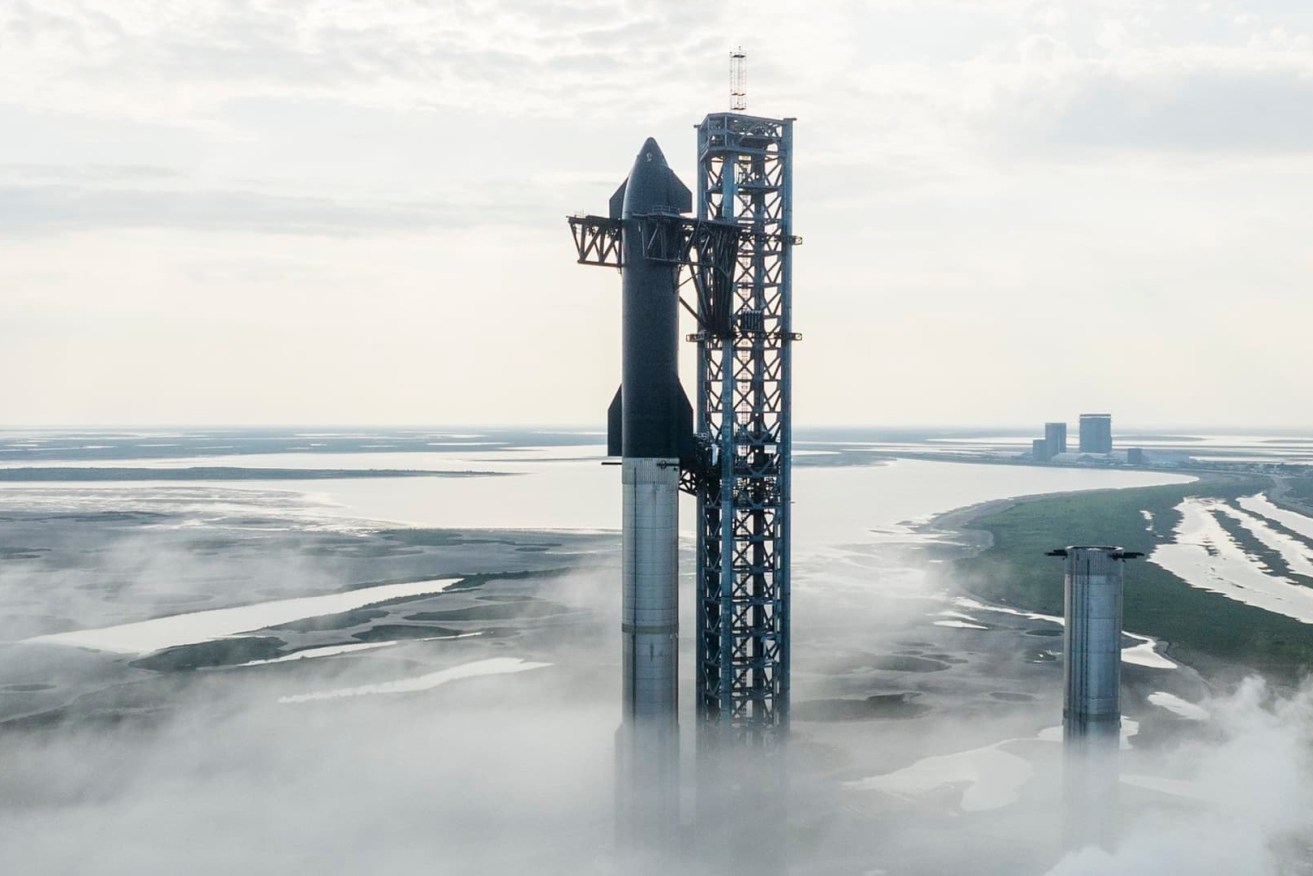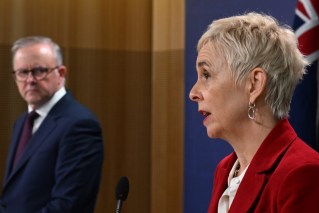Monster rocket test puts SpaceX one step closer to first orbital flight
SpaceX’s towering super heavy booster, one half of the company’s Starship rocket system, has briefly roared to life for the first time in a test-firing that puts the behemoth moon and Mars vehicle closer to its first orbital flight in the coming months.

Starship prototype 24 stacked on top of Super Heavy booster prototype 7 at the company’s facility near Brownsville, Texas. (Image: SpaceX)
Thirty-one of the super heavy booster’s 33 Raptor rocket engines fired for roughly 10 seconds at SpaceX’s south Texas rocket facilities, the company’s chief executive Elon Musk tweeted shortly after the test.
“Team turned off one engine just before start and one stopped itself, so 31 engines fired overall,” Musk tweeted.
“But still enough engines to reach orbit.”
It was unclear whether SpaceX will decide to conduct another static fire test with all 33 engines before the powerful, next-generation rocket launches to space for the first time.
That launch, a test mission lifting off from Texas and landing off the coast of Hawaii, could happen “in the next month or so”, SpaceX president Gwynne Shotwell told a conference on Wednesday, although the exact launch date depends on the outcome of Thursday’s static fire test.
“Keep in mind, this first one is really a test flight,” Shotwell said.
“The real goal is to not blow up the launch pad. That is success.”
The test-firing of Starship’s 31 Raptor engines appeared to set a new record for the amount of thrust produced by a single rocket – roughly 17 million pounds compared with 10.5 million pounds for the Russian N1, and eight million pounds for NASA’s Space Launch System, commentators on a live stream by space media group NASA Spaceflight said.
Starship, the centrepiece of Musk’s goal to colonise Mars, is a stainless steel-clad, two-stage rocket system standing taller than the Statue of Liberty at almost 120 metres.
Its 33 Raptor rocket engines make it more powerful than the Saturn V, NASA’s rocket that sent humans to the moon under its Apollo program.
Starship’s development is partially funded by NASA, which plans to use the rocket in the next decade to land its first crew of astronauts on the moon since 1972, as part of the agency’s multi-billion-dollar Artemis program.
A day before SpaceX’s static fire test, NASA in Mississippi test-fired a redesigned version of its own rocket engines, the Aerojet Rocketdyne-built RS-25, which will power the US space agency’s Space Launch System rocket.
SLS and SpaceX’s Starship are the two main rockets that will help put NASA astronauts on the moon in the next decade.
Shotwell on Wednesday said Starship will need to launch hundreds of uncrewed missions carrying satellites before it flies humans for the first time.












